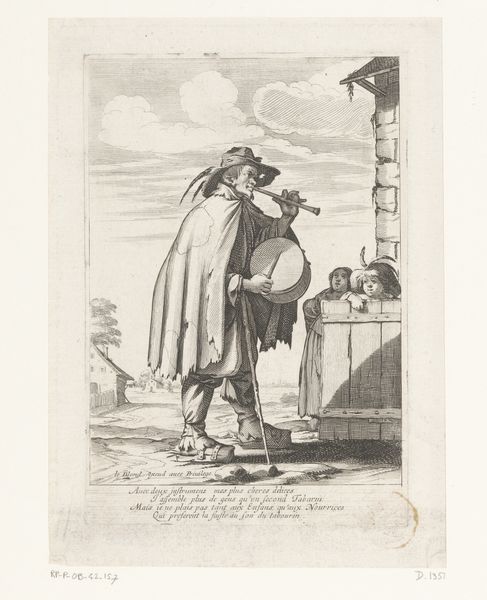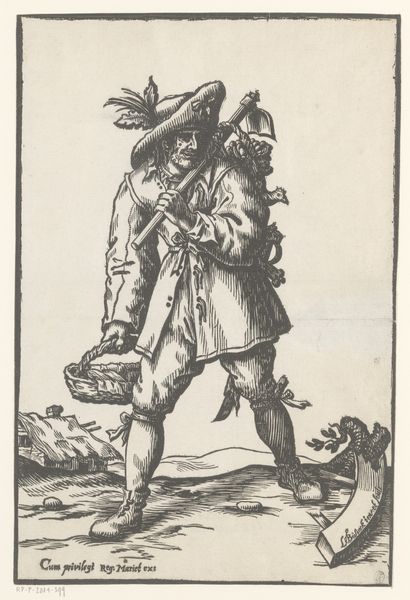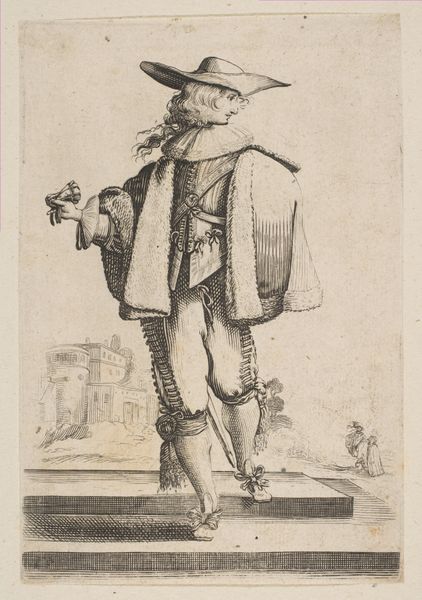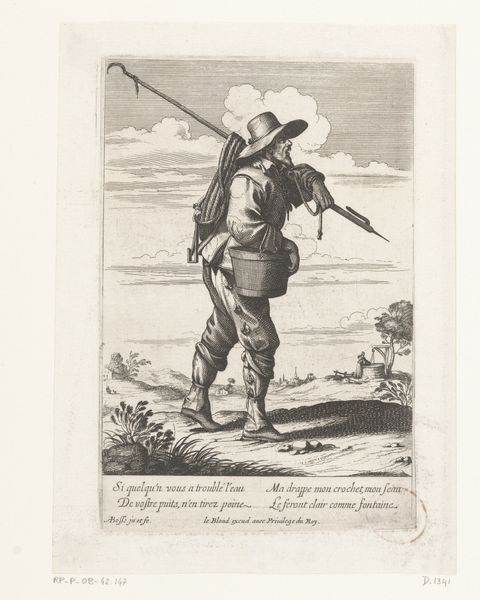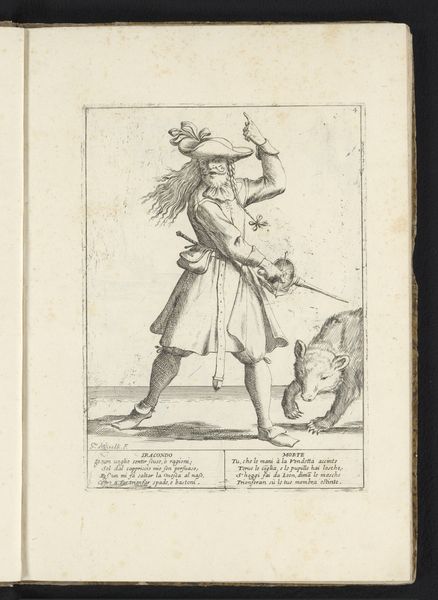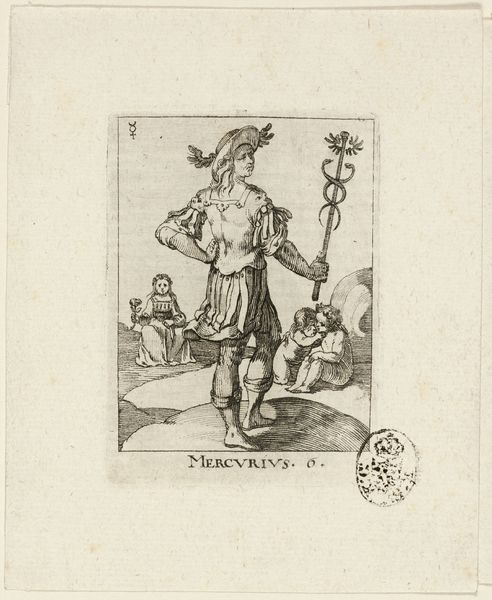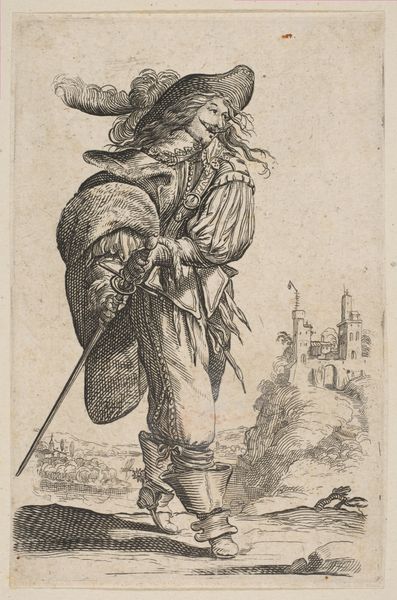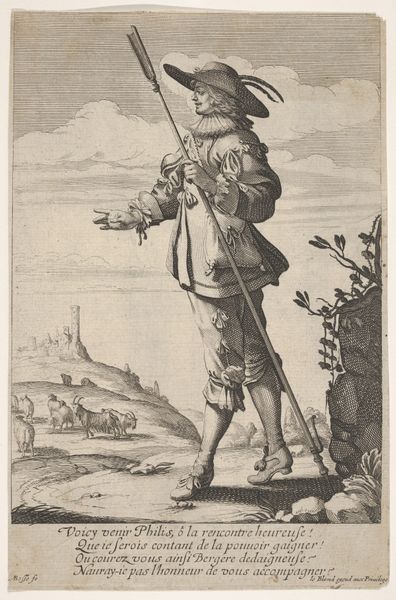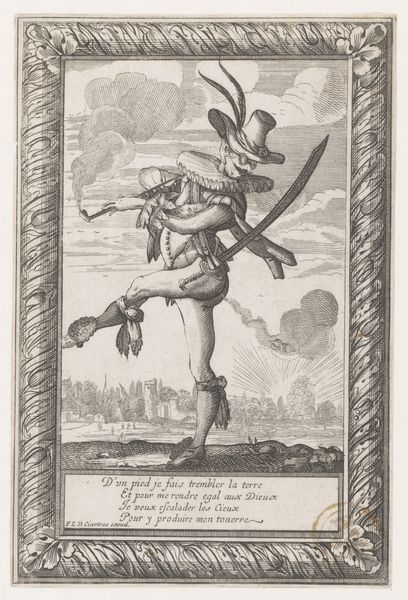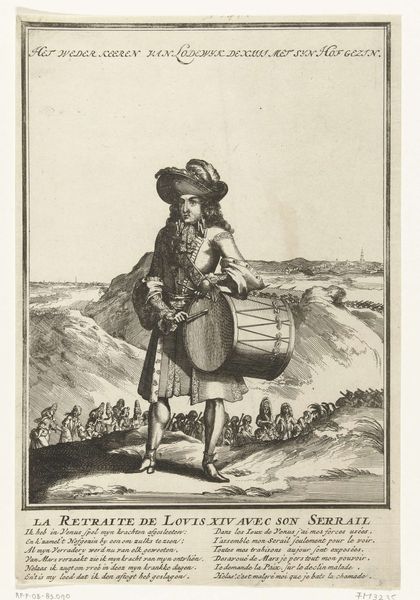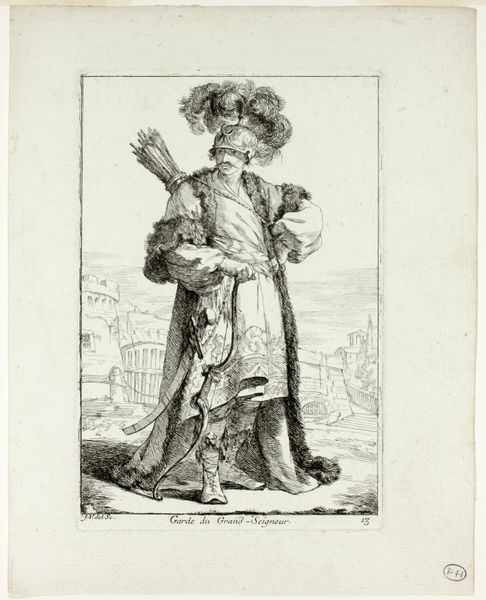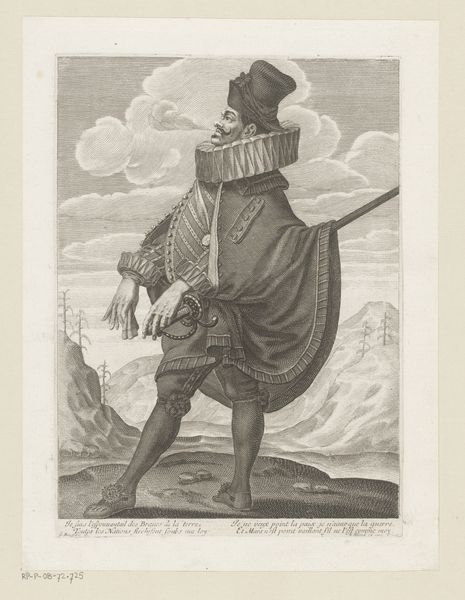
print, engraving
#
baroque
# print
#
old engraving style
#
cityscape
#
genre-painting
#
engraving
Dimensions: height 220 mm, width 145 mm
Copyright: Rijks Museum: Open Domain
Curator: Welcome. We’re now looking at an engraving by Abraham Bosse from around 1629 to 1630, entitled "Oesterverkoper," housed here at the Rijksmuseum. It depicts an oyster seller. Editor: My first thought is how light and airy the image feels despite its fine, deliberate lines. It really opens up that urban, seaside setting. Curator: Exactly. Observe how Bosse uses line and shading to articulate volume, giving substantial weight to the figure against the expansive backdrop. Editor: Speaking of which, that is no ordinary figure. He is clad in motley and a cap with ass's ears—an established character. Could we be seeing a sly social commentary here? Is Bosse using the stock character of the fool to comment on the oyster trade, or even larger themes of value and status? Curator: Symbolism, yes! This costume immediately brings to mind notions of deception and perceived value. In Dutch art, such figures are often mirrors to societal folly. Also notice that his gaze goes towards heaven. Editor: I like how the distant cityscape grounds the scene. Curator: That background does add complexity, setting the character against a solid wall, with the more fanciful forms behind it in opposition. We should not dismiss the oyster’s symbolic resonance with luxury, status, even indulgence in contemporary society. The costume, contrasted with what it conceals. Editor: It’s an elegant image of work. Despite its subtle mockery, the artist acknowledges the dignity and the necessity of labor that’s always felt timely to those buying shellfish on the pier today. Curator: I agree. It reveals much about the city. A successful etching, as it engages across temporal expanses through the timelessness and immediacy. Editor: Indeed, its symbols echo with subtle reverberations still.
Comments
No comments
Be the first to comment and join the conversation on the ultimate creative platform.
